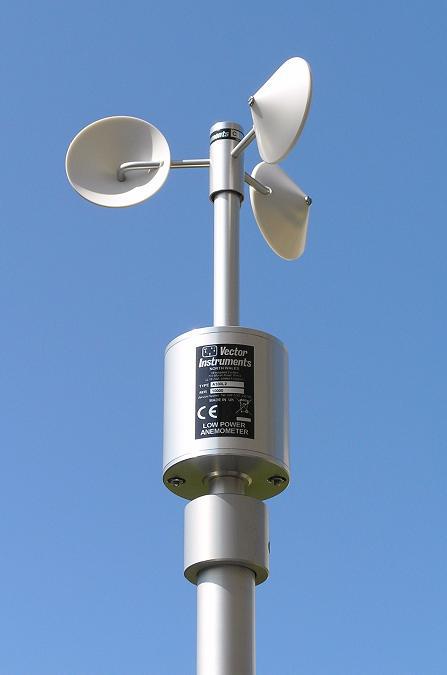Specialist Tips for Calibrating Your Anemometer for Optimal Efficiency
Specialist Tips for Calibrating Your Anemometer for Optimal Efficiency
Blog Article
All You Need to Understand About Anemometers: How They Work, Why They Issue, and Where to Make use of Them
Anemometers, however commonly neglected in the realm of scientific instruments, play an essential role in different areas, using beneficial understandings into wind speed and air flow patterns. Understanding the technicians behind these gadgets is necessary for any person seeking to harness the power of this data. From meteorologists tracking climate patterns to designers developing structures with wind lots in mind, the applications of anemometers are far-ranging and diverse. As we dig into the complexities of anemometer technology, we will reveal the inner operations of these tools, their value, and the crucial factors to consider when picking the appropriate anemometer for certain applications.

Anemometer Fundamentals
A vital tool utilized to determine wind speed and direction, the anemometer plays a critical duty in weather forecasting and different industries. An anemometer commonly is composed of 3 or four mugs that turn in the wind, a vane that aims into the wind, and sensors to track the rotations or movements. By calculating the turnings or activities over a specific amount of time, the anemometer can establish wind speed. The vane aids figure out wind direction by aiming right into the wind, providing beneficial data for climate projecting, aviation, maritime procedures, ecological monitoring, and wind power applications.
There are various kinds of anemometers offered, consisting of cup anemometers, vane anemometers, hot-wire anemometers, and sonic anemometers, each with its special attributes and applications. Cup anemometers are generally utilized for standard wind speed dimensions, while vane anemometers are preferred for directional dimensions. Hot-wire anemometers appropriate for low airspeeds, and sonic anemometers are excellent for high-precision measurements in research study and commercial setups. Understanding the fundamentals of anemometers is important for accurate wind information collection and evaluation across different markets.
Concepts of Anemometer Procedure
Building on the fundamental understanding of anemometer fundamentals, the principles of anemometer procedure illuminate the auto mechanics behind wind speed and instructions measurements. Mug anemometers, for instance, have 3 or more mugs that catch the wind, triggering them to spin much faster as the wind rate rises. Hot-wire anemometers depend on a heated cord that cools down as wind passes over it, with the rate of cooling determining the wind rate.
Value of Anemometers
Anemometers play a crucial function in measuring wind rate and direction, offering important data for climate forecasting, environment researches, ecological monitoring, and aviation operations. Meteorologists rely on anemometers to gather accurate wind information, assisting them comprehend weather condition patterns, forecast tornados, and issue prompt cautions to the public. Wind ranch drivers make use of anemometers to examine wind conditions and optimize power manufacturing from wind turbines.
Applications Across Numerous Industries
Applications of anemometers span throughout diverse sectors, showcasing their adaptability and utility past meteorology. In the renewable resource sector, anemometers play a crucial duty in evaluating wind conditions for wind ranch placements, making certain optimum energy production. Industries like construction and mining utilize anemometers to check wind rates, essential for security procedures, especially site web when working at elevations or in open-pit mines where strong winds can posture threats. Anemometers are likewise integral in the air travel sector, assisting pilots in comprehending airspeed and wind instructions for secure take-offs and landings. The maritime market gain from anemometers for ship navigation, assisting seafarers anticipate weather modifications and change courses as necessary. In agriculture, anemometers help farmers in taking care of plant spraying by supplying real-time information on wind speed to stay clear of drift. Anemometers discover applications in A/c systems to maximize airflow and boost energy efficiency in buildings. The varied usage instances of anemometers emphasize their relevance across various industries, highlighting their vital duty in enhancing operational safety and effectiveness (anemometer).

Picking the Right Anemometer for Your Demands
Selecting the suitable anemometer tailored to your particular requirements is crucial for obtaining accurate wind speed and instructions dimensions. When choosing an anemometer, consider aspects such as the intended application, needed measurement array, environmental conditions, and preferred attributes. For general purposes, a cup anemometer appropriates for measuring wind speed, while a vane anemometer offers wind direction data. Hot-wire anemometers are excellent for low airspeed measurements, and ultrasonic anemometers use high precision and longevity.

Verdict
In final thought, anemometers play an important role in determining wind speed and instructions across different sectors. It is crucial to consider the relevance of anemometers in order to make educated decisions when choosing the most appropriate gadget for why not look here measuring wind problems.
There are different kinds of anemometers offered, consisting of mug anemometers, vane anemometers, hot-wire anemometers, and sonic anemometers, each with its unique features and applications. Mug anemometers are typically made use of for standard wind rate measurements, while vane anemometers are favored for directional measurements. Hot-wire anemometers are appropriate for reduced airspeeds, and sonic anemometers are suitable for high-precision measurements in research and commercial setups.Building on the fundamental understanding of anemometer basics, the principles of anemometer operation elucidate the auto mechanics behind wind rate and instructions measurements. For basic functions, a cup anemometer is appropriate for determining wind speed, while a vane anemometer offers wind instructions data.
Report this page